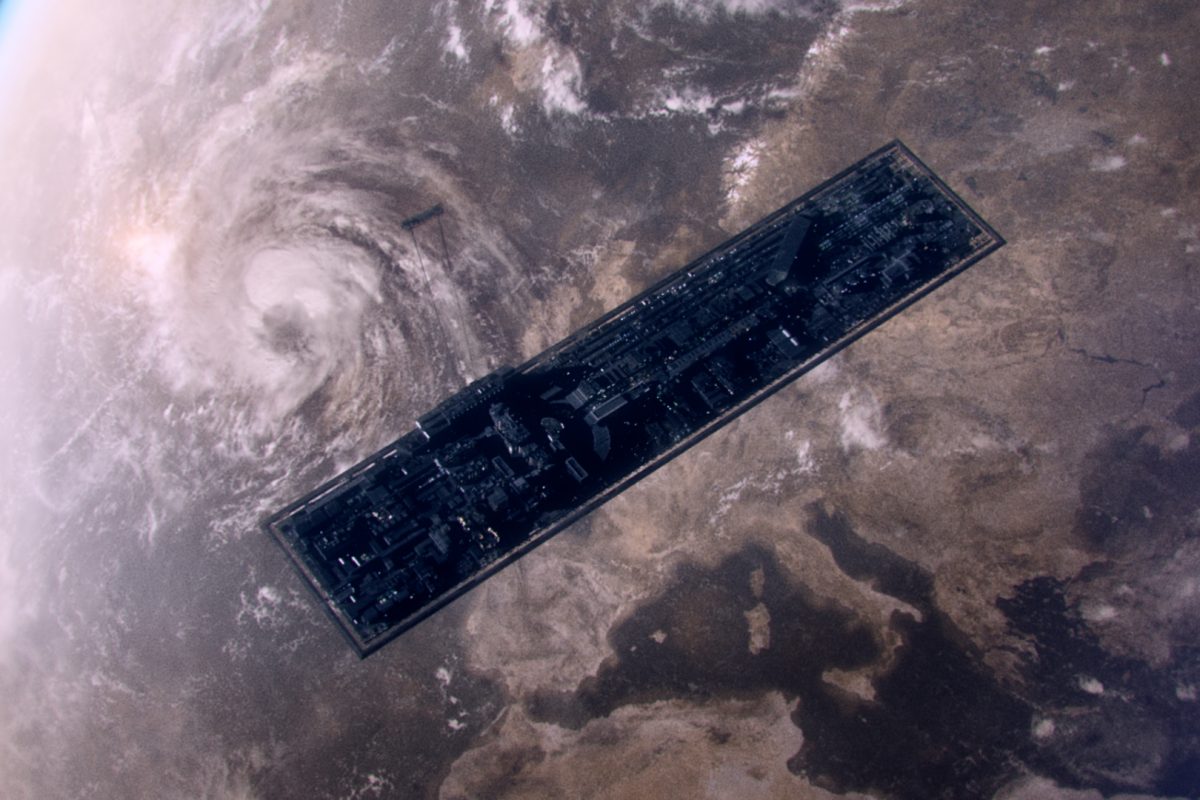Aniara locates terror in a lifetime of being trapped in a liminal space. Set onboard the titular spaceship, originally intended to travel from Earth to Mars, it constructs an imaginative space from pieces of a Stockholm shopping mall, the hallways of a cruise ship, and sets built for the film. None of this ever looks natural or, more importantly, homey. Aniara’s passengers are nostalgic for an earlier, much more peaceful time on Earth, when they could pick raspberries by a waterfall. A montage of fires, tornadoes, collapsing buildings and floods, played over the opening credits, suggests how long ago that may have been. Based on a 1956 poem by Harry Martinson, Aniara had a trail of influence both before and after this film, inspiring a 1959 opera, prog-metal band Seventh Wonder’s 2010 album Great Escape and, in a more comic register, the 2020-22 HBO Max series Avenue 5.
Aniara is used to take passengers on a three-week journey. The Mimaroben (Emelie Jonsson), known as MR for short, has an extremely important task, helping passengers occupy their time in a room with Mima, a computer which allows them to experience VR-like hallucinations based on their memories. Almost immediately, Aniara is bumped off its course by an accident. Debris damages its nuclear reactors. Captain Chefone (Arvin Kananian) speaks to the passengers, telling them that it can get back on course once it passes a large gravitational field. As MR learns from her roommate, Aniara’s astronomer (Annelli Martini), there’s almost no chance this could actually happen. The cracks in the captain’s military bearing grow thicker. (Initially clean-shaven, he grows a mustache, and from that point, his facial hair gets shaggier and more grey.) Chapter headings leap forward steadily in time. The algae which purify their water and generate their food build up, leading to a gross, if not toxic, contamination.
One of the most striking aspects of Aniara is its spare but effective world-building. Some details, like the burn scars on several passengers’ faces, are noticeable but remain unexplained. Bandaged arms imply suicide attempts. The fact that Mima is driven to its own destruction by so many humans’ negative memories shows that these people have suffered violence and are likely living with PTSD. Space is so tight that even a woman as important as the astronomer can’t be given a room to herself. Judging from a few lines of dialogue, the destination of Mars is unlikely to be as promising as passengers expect it to be. It’s described as dark and devoid of plant life. Had the ship made it there, their lives as refugees could wind up as grim as their experiences upon Aniara.
At the start of Aniara, bright blue and orange tones dominate the cinematography. Both of these imply a degree of life. The room where passengers go to escape to their memories has a ferociously orange ceiling, suggesting the sun’s fire. It’s not the same as actually being on Earth, but at least it offers a glimpse. Other parts of the ship use similarly fierce colors. If they’re not always attractive, they burn with an intensity that fades when depression becomes the norm on Aniara. These tones later turn paler and even less natural. Production designer Linnéa Petersson did incredible work synthesizing real locations with VFX. Nothing was built on a scale that suits individual people: the mall looks as uninviting as a packed airport, while MR and the astronomer’s room is too small for two people.
The fact that parts of Aniara were shot in the Sollentuna Centrum mall becomes significant. (You can even watch a video walk-through of the location, with its central staircase.) It addresses the futility of trying to escape mortality through consumerism, entertainment, and even religion. Yet it avoids passing judgment on the characters who attempt to do so. Under the circumstances, their desire to pass the time as they were cruising in the ocean, dancing to techno and playing arcade games, is perfectly natural. The orgy which begins their fourth year is presented positively. Their experiences with Mima aren’t an immersion in fiction; rather, they suggest a yearning for healing through connection back to a genuinely happier time.
Aniara works on a cosmic scale, to a degree not evident until its final shot. Its horror is grounded in the universe’s indifference to the comparatively tiny scale of a person’s life. It’s about a community’s failure, but it follows MR’s pathway. (Other characters, like the misanthropic astronomer, tend to be one-note.) Confronted with the vastness of the stars, she has a panic attack. Once reasons for hope diminish, the ship’s hallways seem endless. Aniara functions so well as a horror film because it lays out the pain of aging in liminal space, with nothing on the other end.
“Aniara” is streaming on Hulu, Plex, Tubi, Kanopy, and Hoopla, and is available for digital rental or purchase.
